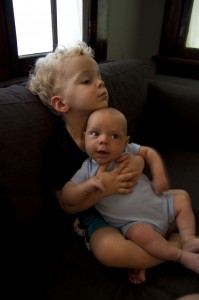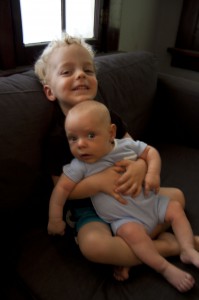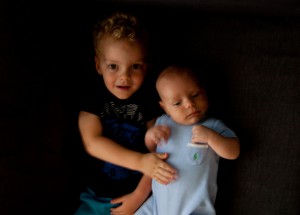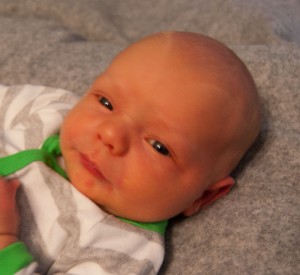As adults, we’ve all experienced a language barrier at some point or another. You try and try to understand each other, but for some reason, your wires keep crossing. Depending on what the goal was, you may have just given up, politely disappointed, or angrily thrown your hands up in frustration.
Now, consider preverbal babies and toddlers. Imagine having a language barrier when you can’t do much for yourself.
It takes a while for babies to learn how to express that they’re tired, hungry, dirty, wanting a hug, or upset because big brother took away a toy. Until they can do that, we have to expect the occasional emotional outburst.
I embedded a video that I think shows exactly what’s happening when children are having a hard time communicating. I was recording my daughter, hoping to catch her new word and baby sign for “more.” I also happened to catch her doing something pretty remarkable. Watch the change from frustration from being unable to get her idea across, to complete calm and control.
She starts getting frustrated, she screams and is about to cry, until I remind her how to ask for more grapes. The moment she realizes she can effectively communicate what she wants, the panic goes away and she calmly asks for “more.”
I didn’t catch the part where I gave her the grapes she asked for – she giggled at her success!
It’s easy for us to get frustrated and short when our children throw tantrums. It takes effort to quiet those negative feelings, and instead try to figure out what the child needs. But it’s our job as parents to try as best as we can to understand them, especially when they don’t yet have much language to work with.
In my experience, Attachment Parenting has helped us in the communication department. Our kids’ father and I use the earliest weeks to really get to know the baby, so that we can start to understand cries and cues that will help our baby tell us what she needs. Throughout the early years we use plenty of interaction and play to keep those nonverbal lines of communication wide open. (We’re still in the early years, so I can’t comment much beyond right now!)
We may miss the mark from time to time, but nobody’s perfect. We’re all doing our best.








